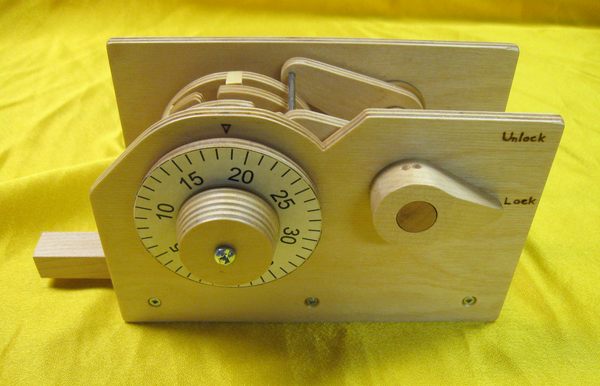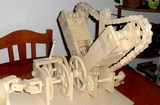Donald Zorn's workshop
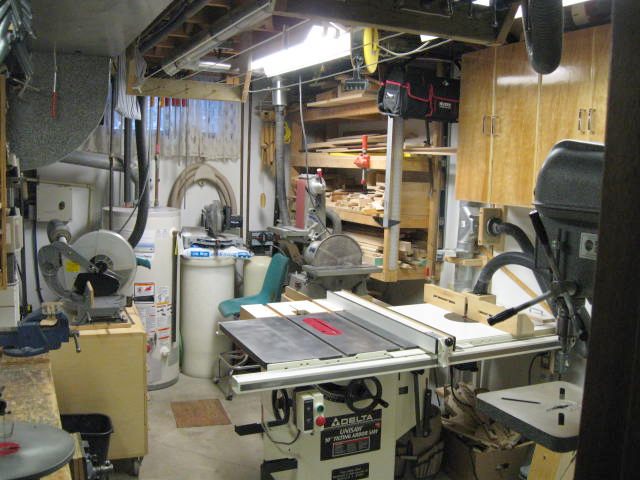
Donald also sent me some photos of his workshop
"My shop pales in comparison to yours as I share the space with our furnace, hot water heater, water softener and freezer. I do have a nice Delta Unisaw with a Biesmeyer fence and which is a treat to use, but I don't have a jointer-planer or bandsaw like you do."
I notice his ceiling is higher than in
my workshop - I'm envious of
that. Very nicely organized space. I think I may have just the
right article for
solving the no bandsaw problem,
although that may not be productive in light of the no space problem.
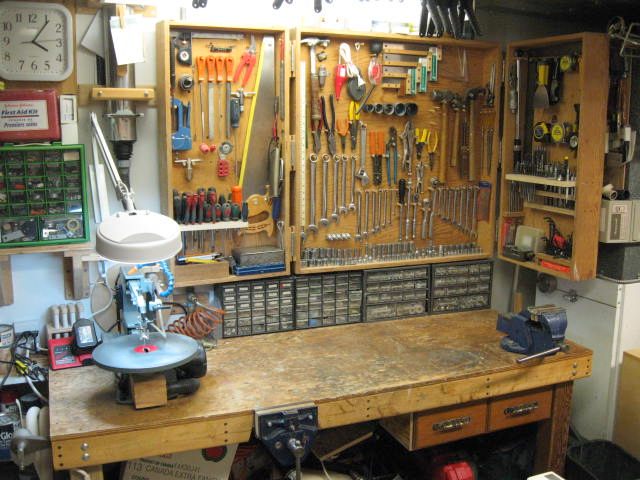
Donald's air engine

Donald sent me a photo of his air engine in progress:
I am very close to completion of the wooden air engine. I have
attached a preview photo. The Baltic Birch plywood from Snider
Plywood in Waterloo is in imperial dimensions, so I converted the
whole design over the imperial dimensions using AutoCAD. I also
tweaked the design a bit by increasing the offset on the camshaft
slightly to get a bit more valve movement. That created another
problem making a crankshaft with concentric shafts, so I don't think
that was a good idea.
It runs dry, (better in one direction than the other for some unknown
reason) at maybe 200 RPM with my central vacuum system. I am hoping
that three coats of urethane and some SAE10 oil on bearing surfaces
will improve performance. I am currently tweaking the journal bearing
fits. I plan to borrow a tachometer from work and tach the flywheel
RPM once I get it all done.
Best Regards,
Don
|
Donald made a YouTube video of his air engine in action. He's was able to spin
his air engine up to 1050 RPM using his central vacuum.
He shot his video at 15 frames
per second, and the engine turns more than one revolution per video frame!
After seeing his engine spin so fast, I tried to get mine to spin faster by shortening the stroke, and attaching a vaccum and a blower to it I got mine up to 1000 RPM (Video) Donald had modified the design to give the crankshaft a longer throw and enlarged the valve openings. That, and better lubrication is probably why his engine runs faster than mine. |
Donald's combination lock
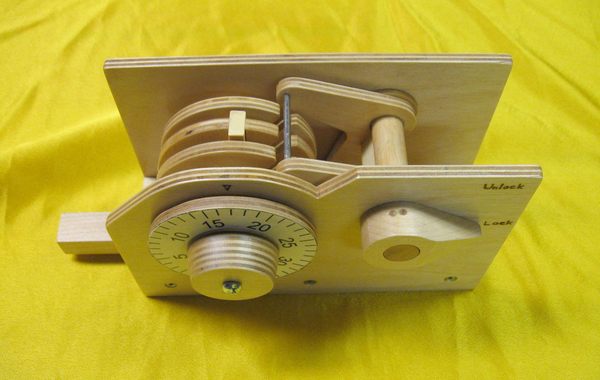
|
Donald also sent me photos of his combination lock model and a slight problem he was having with it:
"My primary reason for emailing
you was to thank you for your website and YouTube videos.
My secondary reason for emailing you is that I just finished building the
wooden combination lock and have a minor problem which I am trying to
solve. The lock works perfectly except for the fact that when the
dial is turned, the two free-moving rotors (especially the rear one)
have a tendency to move slightly away from the set position. It seems
that the friction of the wooden washers in between the rotors is
transferring some motion to the rotors, despite the fact that I am
keeping the screw that holds on the dial very loose."
"If I could increase the friction of the rotor on the shaft, I think it
would eliminate this problem. I believe that a big part of the
problem is that the 5/8" diameter wooden dowelling that I used is
significantly undersized and slightly oval. It measures 0.595" -
0.611" and the hole in the rotors measures 0.626" - 0.629". It is a
very sloppy fit and no doubt is contributing to the lack of friction
of the two rear rotors on the dowel. I was wondering if you
experienced this problem when you built yours and if so, how did you
overcome it? I was considering applying some heat shrink tubing on
the dowel, but it measures 0.014" in thickness - too thick much for
what I need. Do you have any good ideas on how to solve this problem?"
I have to say, Donald's combination lock looks so much nicer than
the one that I built
I did in fact have the same problem with my combination lock. When
I varnished the pieces for my lock, I deliberately varnished the
insides of the spacers between the rotors. This made the hole smaller
and made them fit tight on the dowel. With the spacers fixed in place,
one rotor can only turn the next rotor via the rotor tabs. There
is still the catch that if you dial too fast, the rotors can overshoot
just by momentum.
Donald's catapult marble machine
| If you are attention span challenged, you can skip forward to 3:43 into the video to see the machine running. |
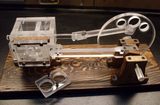 Kyle's plexiglass air engine
Kyle's plexiglass air engine